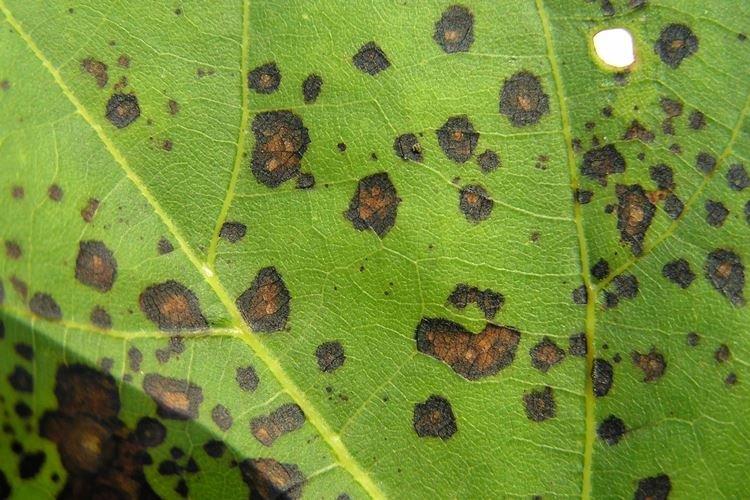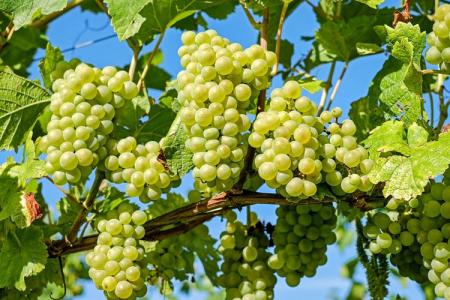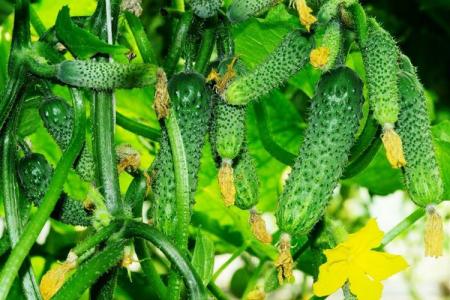
It is impossible to overestimate the benefits of currants for the body. But even such a berry, invaluable for immunity, suffers from its own infections. Although there are much fewer of them than other horticultural crops. In any case, it is important to recognize currant diseases as early as possible, so we have prepared descriptions with photographs. And at the same time we share the main methods of treatment!
1. Anthracnose
This is one of the most common problems and a real scourge of all horticultural crops. Due to its widespread prevalence, it is almost impossible to avoid anthracnose, and it reaches its peak on rainy days during the height of summer. On the leaves of the currant, small lumpy brown spots appear, which gradually grow and spread throughout the plate.
Anthracnose spores successfully winter in fallen leaves, so all residues must be collected and destroyed in time. If a diseased plant died on the site earlier, new ones cannot be planted in its place for several more years. For treatment, use Bordeaux liquid after the first symptoms, and again after harvest.
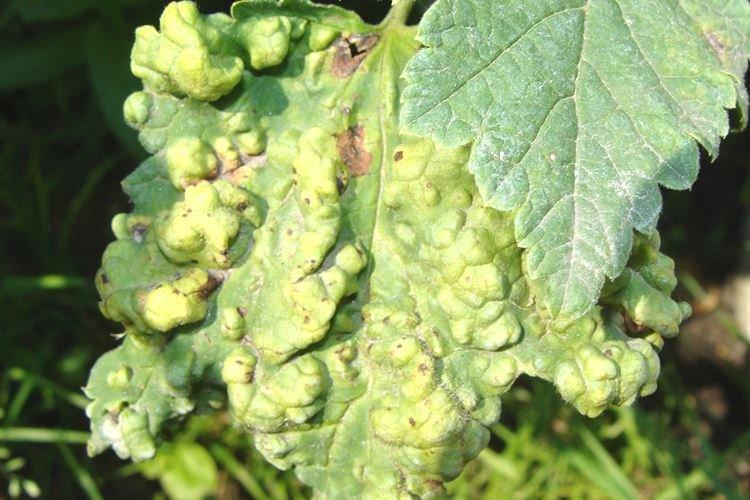
2. Terry
The disease is carried by kidney mites, and most often it affects black currants. The infection causes irreversible mutations that change the shape and appearance of the leaves and flowers. As a result, the shrub does not bear fruit and does not even have a characteristic expressive currant aroma.
Infected plants are not treated, but removed as quickly as possible so that the disease does not spread further. For prophylaxis, plant only healthy seedlings, do not abuse nitrogen in excess of what is necessary and add immunomodulatory phosphorus or potassium supplements. After harvesting, spray the bushes with phosphorus preparations, such as Karbofors.
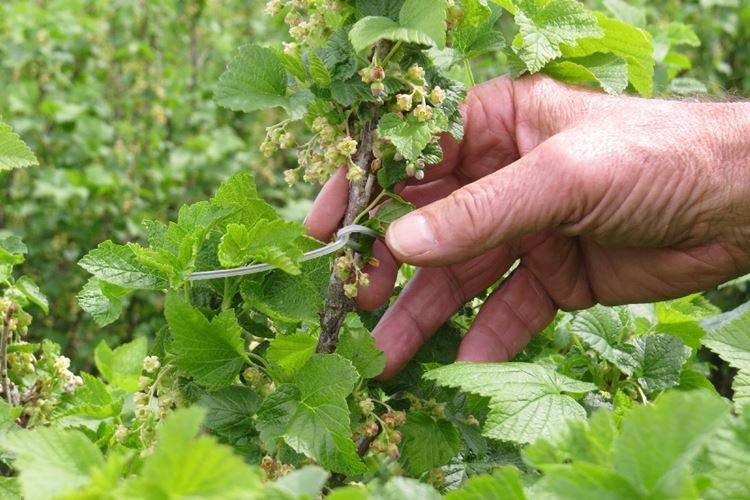
3. Powdery mildew
Another common fungus affects most fruit and berry crops. First of all, he destroys young leaves, which are covered with a friable whitish bloom. But there is an advantage - the fight against powdery mildew is quite easy and effective.
Be sure to stick to the watering and fertilizing regime, and follow the general care. For treatment, spray currant bushes with Fitosporin, a weak solution of copper sulfate or ordinary pharmaceutical iodine at the rate of a bottle per bucket of water. Repeat the procedure several times with an interval of 4 days.
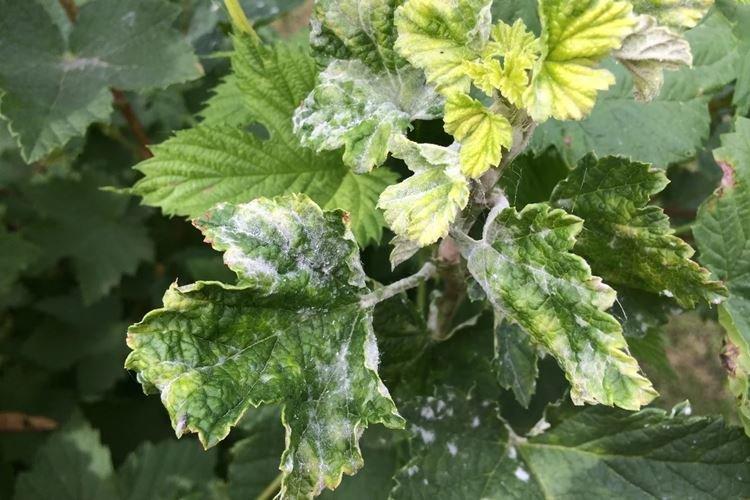
4. Nectric drying
This fungus affects mostly white and red currants. Because of it, young branches are covered with orange bumpy dots, which grow rapidly, and then darken. Very young shoots dry and wither, and in the future the bush may completely die.
For prevention, be sure to follow the watering and feeding regime. Remove dry leaves and weeds, thin out bushes, and avoid excess moisture. At the first symptoms, completely cut out all damaged branches, treat the sections with Bordeaux liquid and cover with garden var.

5. Rust
Currants are affected by several types of rust, due to which lumpy red spots or small red dots are formed on the leaves. In fact, the species differ from each other only in the carrier - needles or sedge.
Therefore, avoid such neighborhoods, and use Fitosporin for treatment. If the damage is already significant or Fitosporin has not worked, spend 3-4 sprays with Bordeaux liquid at intervals of one and a half weeks.
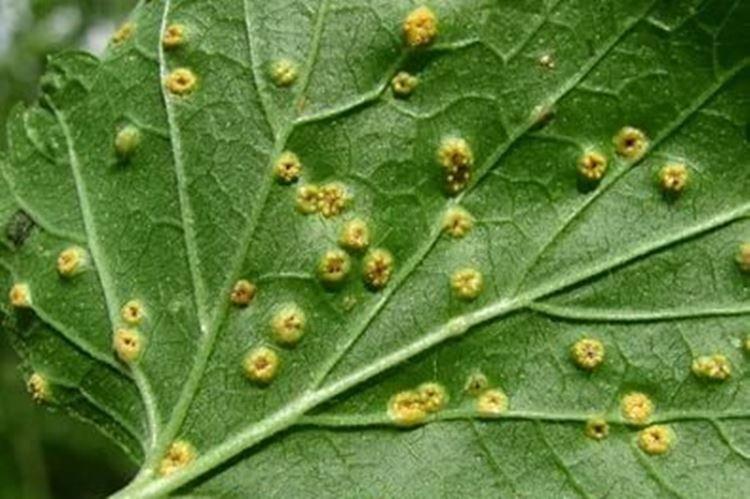
6. Striped mosaic
If the leaves of the currant began to turn yellow in irregular spots at the height of the season, this is a sure symptom of a mosaic. Most often, the yellowness diverges from the veins and leaves a complex chaotic pattern. It is impossible to cure the disease, so the affected bush must be dug up as soon as possible, destroyed and the entire area must be treated with potassium permanganate.
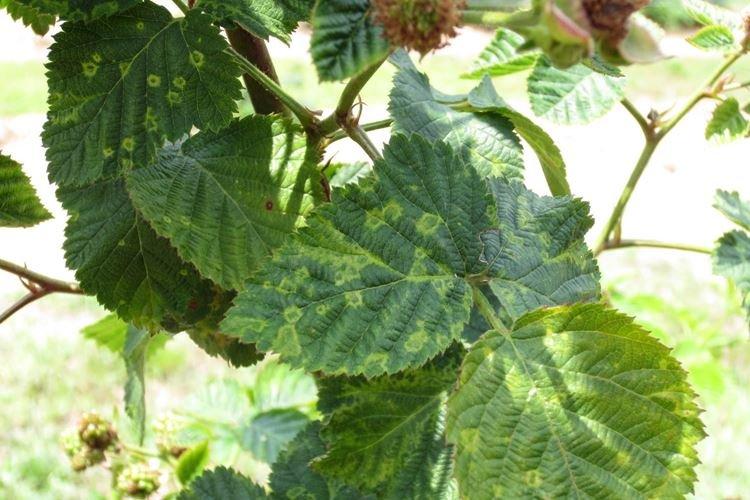
7. Septoria
This is another fungal spot, in which white spots with a brown border appear on the leaves of the currant. They grow gradually and can spread to other shrubs. Especially - on cloudy wet days or when planting too tight.
To prevent disease, keep the distance between the bushes, dig up the aisles and regularly thin out the branches. For treatment, remove all damaged areas and treat the bush with Bordeaux liquid. Use specialized medications like Alirin-B with a soapy solution. You may need up to 5 such treatments at weekly intervals.
